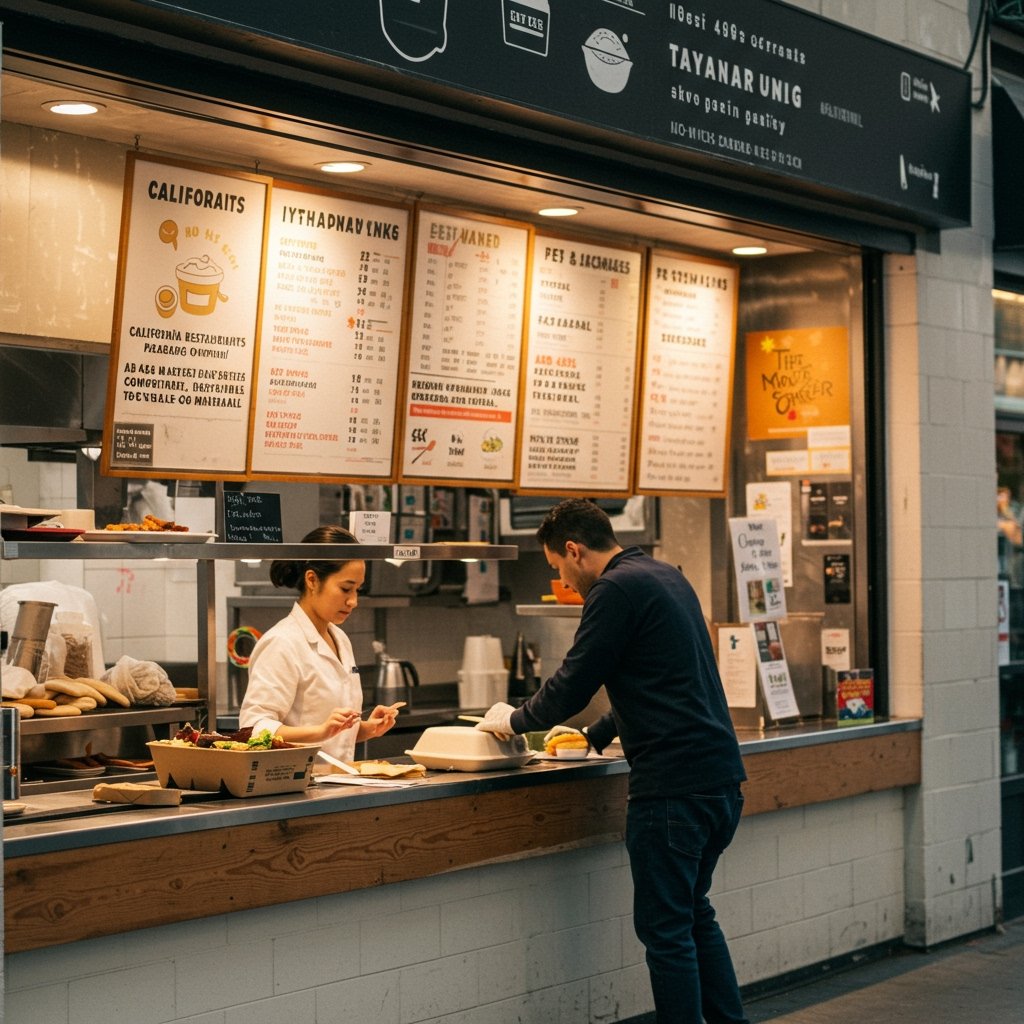California Signs AB 456 Into Law, Reshaping Restaurant Packaging Landscape
SACRAMENTO, CA — California has enacted landmark legislation poised to fundamentally alter how restaurants and food vendors provide single-use packaging to consumers across the state. On February 27, 2025, Governor Gavin Newsom signed Assembly Bill 456 (AB 456) into law, initiating a statewide mandate for certified compostable or recyclable to-go materials. The legislation, aimed squarely at reducing the environmental footprint of disposable food service items, sets a firm deadline of January 1, 2026, for all affected establishments to achieve full compliance.
The passage of AB 456 marks a significant step in California’s ongoing efforts to combat waste and pollution, particularly concerning plastics and non-recyclable materials that often end up in landfills or, troublingly, polluting the state’s iconic beaches and waterways. The bill’s core requirement is straightforward but far-reaching: any single-use food packaging provided by restaurants and food vendors statewide must meet specific certification standards confirming its compostability or recyclability.
Navigating the Transition: Costs and Operational Shifts
The transition mandated by AB 456 is not without its challenges, particularly for the state’s vast food service industry. Industry estimates from the California Restaurant Association highlight the potential financial burden on businesses as they pivot away from conventional packaging. According to their projections, the initial compliance costs could range significantly, falling between $5,000 and $10,000 per location. This figure accounts for expenses such as sourcing and purchasing new packaging inventory, updating point-of-sale systems or procedures, potentially requiring new storage solutions, and training staff on new materials and waste sorting protocols.
Considering California is home to 75,000+ food service establishments, the aggregate cost across the industry is substantial. For many independent restaurants and smaller chains, absorbing these upfront costs while navigating already thin margins presents a considerable hurdle. The California Restaurant Association and other industry groups have voiced concerns about the potential impact, especially in a post-pandemic economic climate where businesses are still striving for stability.
The shift involves more than just purchasing different cups, containers, and cutlery. It necessitates a complete review of supply chains, ensuring reliable access to certified materials that meet the state’s requirements. Furthermore, the operational aspect of handling these materials – including potentially more careful storage for compostable items or establishing clear recycling streams – adds complexity to daily operations.
Environmental Imperative: Reducing Pollution and Waste
Proponents of AB 456 champion the law as an absolutely crucial step for reducing coastal pollution and landfill waste. They point to the alarming volume of single-use food packaging that contributes to litter in public spaces and marine environments. Traditional plastic and non-compostable materials can persist in the environment for hundreds of years, breaking down into harmful microplastics that pose risks to wildlife and ecosystems.
By requiring a transition to certified compostable or recyclable alternatives, AB 456 aims to divert a significant portion of this waste stream away from landfills. Compostable materials, when processed in appropriate facilities (which is another infrastructure challenge California continues to address), can return valuable nutrients to the soil. Recyclable materials can be processed and reused, reducing the need for virgin resources.
Environmental advocacy groups and the bill’s legislative sponsors have consistently argued that the long-term environmental benefits – a cleaner coastline, less strain on landfills, and a move towards a more circular economy for packaging – far outweigh the short-term implementation challenges. They view the January 1, 2026, deadline as achievable with proactive planning from businesses and support from the state and industry partners.
Balancing Environmental Goals with Business Realities
Despite the clear environmental objectives, opponents of AB 456 have raised legitimate concerns about the potential impact on small businesses and consumer prices. The estimated compliance costs, while potentially manageable for large corporations, can be burdensome for independently owned restaurants, cafes, and food trucks.
Critics argue that the increased cost of purchasing certified compostable or recyclable packaging – which is often more expensive than conventional alternatives – will inevitably be passed on to consumers in the form of higher menu prices. This could disproportionately affect lower-income individuals and families, adding to the cost of living in an already expensive state.
Furthermore, questions remain about the availability and consistency of supply for certified materials, especially as demand surges statewide post-January 1, 2026. There are also nuances regarding the certification process itself and ensuring that packaging labeled as “compostable” is truly accepted and processed by the composting infrastructure available in different municipalities across California.
Small business advocates are urging for greater financial assistance programs or tax incentives from the state to help ease the transition costs. They emphasize that while they support environmental goals, the approach should not inadvertently penalize the businesses that are vital components of local economies and communities.
Looking Ahead: Implementation and Adaptation
With the law now signed, the focus shifts to implementation. State agencies will likely release detailed regulations and guidance to help businesses understand the certification requirements and compliance process ahead of the January 1, 2026, deadline. Education and outreach will be critical to ensure that all 75,000+ food service establishments are aware of the new rules and have the resources they need to adapt.
The success of AB 456 will ultimately depend on the collaborative efforts of the state, local governments, the restaurant industry, packaging manufacturers, and consumers. It represents a bold move by California to tackle the pervasive issue of single-use packaging waste, setting a precedent that could influence policies in other states and regions. While challenges related to cost, supply chain, and infrastructure remain, the law firmly sets California on a path towards a more sustainable future for to-go dining.



















